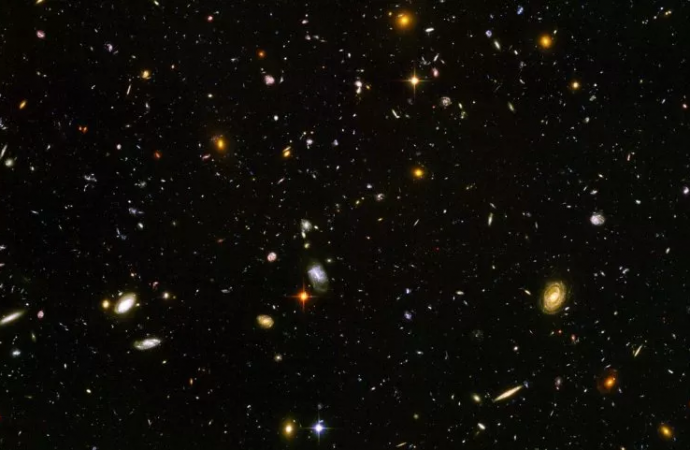Scientists have taken another step toward understanding dark energy by peering through a cosmic cloud of water vapor billions of light-years away from Earth.
Source: Newsweek
Dark energy is the name given to the mysterious force that appears to be driving the universe’s accelerating expansion. Scientists know that space appears to be getting bigger at an increasingly fast rate, they just aren’t sure why.
With this expansion, the universe gets cooler. It stands to reason that in the universe’s earlier stages, things were warmer. In a study released this week, researchers outlined exactly how much warmer the universe was by measuring something called the cosmic microwave background (CMB) radiation—faint, leftover radiation from the Big Bang.READ MORE
To work out how much warmer the CMB used to be, scientists peered at the distant galaxy HFLS3, known for the high number of new stars being born there. Due to the galaxy being so far away—around 13 billion light-years—its light takes 13 billion years to reach us.
In other words, when we observe that galaxy, we are observing the universe as it was just 880 million years after the Big Bang, around 13 billion years ago. The universe is thought to be nearly 14 billion years old.
In between that galaxy and Earth is a large cloud of water vapor near to HFLS3, which is cooler than the surrounding CMB. The temperature difference between the CMB and this cloud creates what are called absorption lines, which are produced when photons from a comparatively warm spectrum pass through a cooler material. The light emitted by the stars within the galaxy HFLS3 aided in these observations.
By studying the absorption lines, the scientists were able to measure the temperature of the CMB as it was back then, and found that its temperature was in the range of 16.4 and 30.2 Kelvin, which is -430 and -405 degrees Fahrenheit, respectively.
This certainly doesn’t sound warm, but it is warmer than the CMB temperature of today, which is just 2.7 Kelvin or -454 Fahrenheit.
Trying to Understand Dark Energy
Dominik Riechers, professor of observational and experimental astronomy and astrophysics at the University of Cologne and an author of the study, told Newsweek that the findings could shed some light on dark matter.
“The temperature of the CMB at different times in the Universe’s history encodes how the Universe expanded since the Big Bang,” he said. “Dark energy is one of the key factors driving the expansion of the Universe. Hence, a deviation from the expected temperature trends would reveal deviations in the way that the Universe expands, which then would confirm or refute different properties of dark energy.”
Riechers said that more observations of different types of dark energy and measurements from different locations and periods of the universe’s history would be needed to verify their findings and confirm or rule out alternative theories about dark energy.
The study: “Microwave background temperature at a redshift of 6.34 from H2O absorption,” was published in the journal Nature on February 2.
Source: Newsweek

































Leave a Comment
You must be logged in to post a comment.